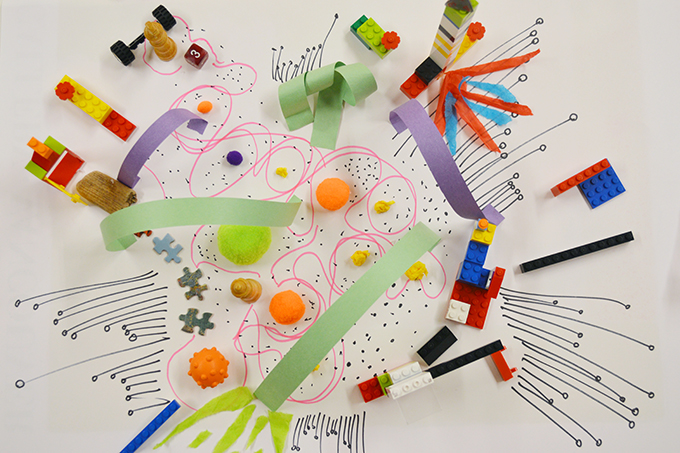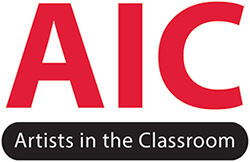May 13, 2016
The Creative Process: Artists in the Classroom

 Artists in the Classroom grants bring professional artists into schools for rich learning experiences. The artists engage students in a creative process, whether it is being used to explore fractals in nature, investigate family history through imagery or dive deep into the stories behind classical tales.
Artists in the Classroom grants bring professional artists into schools for rich learning experiences. The artists engage students in a creative process, whether it is being used to explore fractals in nature, investigate family history through imagery or dive deep into the stories behind classical tales.
The creative process is cyclical and successively cumulative. As the new BC Curriculum's Core Competencies point out, "Creative thinking is deeply collaborative. New thoughts and concepts are built on combinations of existing thoughts and concepts. The ideas available as raw material for creative thinking depend on previous experiences and learning, as well as one's cultural legacy." Because of its divergent and collaborative nature, the creative process engages young people through a natural approach of play. It deemphasizes the pressure of producing "the one and only solution" and instead engages young people to think in possibilities rather than deficiencies, where mistakes and failure are destigmatized and utilized as opportunities for learning.
Everyone has the capacity to think creatively; it is an innate ability in every human being whether you're an artist, a teacher, an entrepreneur, an athlete, a mother or a Kindergarten student. Creativity also frequently exists outside of art production and is found in the world of business, in restaurants, in sports and in every facet of any human endeavor. Perhaps one of our misunderstandings about creativity is how we engage with it, or rather, how it engages us. Historically, creativity has often been interpreted through manifestations outside of ourselves, from deity and muses to our contemporary metaphor of a lightbulb. These flashes of creativity seem to produce themselves out of thin air, from disparate elements apart from us. Another misconception with the way in which we engage with creativity is in the way we think about what it is exactly, as Branislav Henselmann, Executive Director of Ballet BC, put it so aptly in an interview with ArtStarts, "Creativity is a way of thinking, not a way of producing." This way of thinking frees ourselves of any obligations to produce, and instead engages in idea exploration and generation. When was the last time we actively allowed ourselves to play? This way of thinking or engagement is what we refer to as the creative process.
Within the creative process, there are four main components. They are often referred to as the "Stages of Creativity": Preparation, Incubation, Illumination and Verification.
Preparation is scaffolding. Preparation is also the accumulation of ideas, skills and experiences that we have been exposed to. This stage is constant and remains in progress even after we engage with a problem to solve or an idea to express. We may also engage in acquiring new information once we become active in problem solving.
Through reasoning, our brain engages in organizing information. The Incubation stage is our brain's ability to make these connections unconsciously. It is important to allow ourselves space and time for our brain to create connections between our ideas, skills and experiences that may have never been linked before.
As ideas coalesce with other ideas and take shape, they divergently produce new ideas. The process of these ideas joining and forming into visible, logical and sensible forms in our conscious brain is the stage of Illumination, the "eureka" moment.
Once Illumination happens, the next stage is Verification. In this stage, we figure out how to express and communicate these ideas to other people. We begin to collaborate and bounce off these ideas with other brains to verify whether or not they have substance.
Want to ignite the creative process in your classroom? Apply for an Artists in the Classroom grant. You can start by taking the AIC Eligibility Quiz to find out if you're a good candidate. Then read the full grant guidelines and familiarize yourself with the Application Form found here.
Questions? Contact Emily Beam, Grants Manager at [email protected] or 604-336-0626 ext 110.
Read other posts in this series:
Past Stories
Search by category
Accessibility | AIC Projects | Arts Integration in Action | ArtStarts Artists | ArtStarts Team | Community Events and Engagement | Exhibitions | Grants | Guest Blog | Infusion Pro-D | Knowledge Philanthropist | Meet a Community Art Star | Showcase | Supporters | The Next 20

